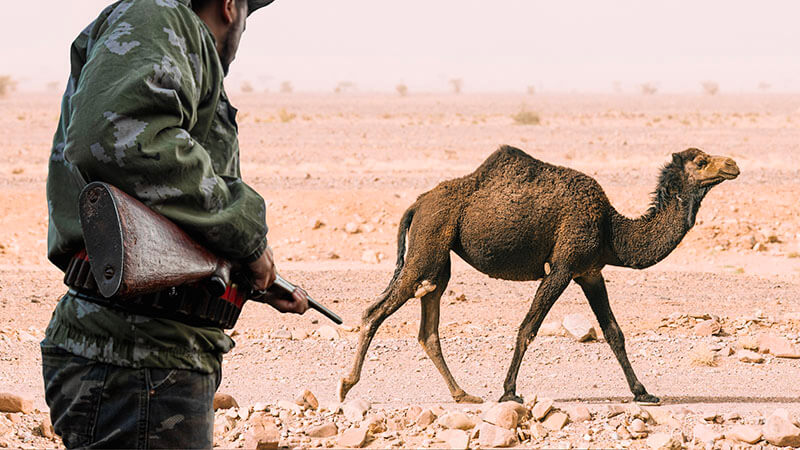
AE 1090 - The Goss
Bugs Take Over Australia During La Nina
Learn Australian English by listening to this episode of The Goss!
These are conversations with my old man Ian Smissen for you to learn more about Australian culture, news, and current affairs.

In today's episode...
G’day, you mob! How’s it going?
What’s the weather like today where you are right now?
Because here in Australia, we are currently experiencing the La Nina phenomenon!
During La Nina, the surface ocean waters along the tropical west coast of South America cool.
And even if it’s far from Australia, this activity affects us here, and means a LOT of rainfall this summer.
In today’s episode, join my dad Ian and me as we talk about what is the El Nino Southern Oscillation (ENSO) and how it affects bugs here in Australia during La Nina.
Is there anything you want to ask me? Drop in your questions here: https://aussieenglish.com.au/askpete
** Want to wear the kookaburra shirt? **
Get yours here at https://aussieenglish.com.au/shirt
Improve your listening skills today – listen, play, & pause this episode – and start speaking like a native English speaker!

Watch & listen to the convo!
Listen to today's episode!
This is the FREE podcast player. You can fast-forward and rewind easily as well as slow down or speed up the audio to suit your level.
If you’d like to use the Premium Podcast Player as well as get the downloadable transcripts, audio files, and videos for episodes, you can get instant access by joining the Premium Podcast membership here.
Listen to today's episode!
Use the Premium Podcast Player below to listen and read at the same time.
You can fast-forward and rewind easily as well as slow down or speed up the audio to suit your level.
Transcript of AE 1090 - The Goss: Bugs Take Over Australia During La Niña
G'day, you mob. Pete here, and this is another episode of Aussie English. The number one place for anyone and everyone wanting to learn Australian English. So, today I have a Goss' episode for you where I sit down with my old man, my father, Ian Smissen, and we talk about the week's news whether locally down under here in Australia or non-locally overseas in other parts of the world.
Okay, and we sometimes also talk about whatever comes to mind, right. If we can think of something interesting to share with you guys related to us or Australia, we also talk about that in The Goss'. So, these episodes are specifically designed to try and give you content about many different topics where we're obviously speaking in English and there are multiple people having a natural and spontaneous conversation in English.
So, it is particularly good to improve your listening skills. In order to complement that, though, I really recommend that you join the podcast membership or the academy membership at AussieEnglish.com.au, where you will get access to the full transcripts of these episodes, the PDFs, the downloads, and you can also use the online PDF reader to read and listen at the same time.
Okay, so if you really, really want to improve your listening skills fast, get the transcript, listen and read at the same time, keep practising, and that is the quickest way to level up your English. Anyway, I've been rabbiting on a bit, I've been talking a bit. Let's just get into this episode, guys. Smack the bird, and let's get into it.
Dad, what's up? What's the goss'?
It's raining. Well, not right at the moment, but it's been raining half the day.
I know. I just got Noah one of those little cricket sets, the plastic ones from Woollies. But yeah, got home and was like, it's pissing down, so it's probably going to have to wait. Not putting this together inside. This is an outside toy.
Save it for Christmas.
I know. All right, so in Australia's wet weather, 'tis the season for spiders, mozzies, mice and mould. La Nina brings more than just rain to eastern states as some unwanted visitors begin venturing into people's homes. So, this was an interesting article that was, yeah, I guess mainly talking about the fact that we are now in a La Nina- What would you say...?
We are indeed.
...Event? So, it is, what, characterised by hot and wet kind of weather, because we have a lot of moisture brought over. So, I thought- Yeah, the article was more about all these spiders and mozzies and termites and rodents. We have a lot more of that and even mould as a result of these climatic changes.
...Damp. Yeah.
Yeah. And so, the animals can get around, move around more freely. Obviously, mosquitoes are going to be breeding a lot more if there's more water available. And then things like rodents can eat all of these animals, and mould is going to be growing all over the place because it's just humid all the time.
Yes.
But we have- Yeah, La Nina, El Nino. We talked in the previous episode where we were talking about gardens, I think about the drought that we had in Ocean Grove, or at least we were in Ocean Grove when the drought was hitting probably...
...Most of South-eastern Australia. Yeah.
And this was during an El Nino event, right?
Yes, it was. And so, these are- I thought I would break this down for you guys because it was interesting and I got to do this in, I think, First-Year geology in probably year 12. I don't know, it would have been biology or something like that, we would have been studying this. But there are these two sort of parts of this cycle, the El Nino Southern Oscillation. So, the El Nino is what the- It's the drier- Is it cold or is it just dry?
Dry.
...Dry, hot and dry. And then the La Nina is the hot and wet. It's kind of like the seasons they get in the north of Australia, right, where it goes from a hot-dry to hot-wet. But yeah, so El Nino and La Nina represent opposite extremes in the El Nino Southern Oscillation, Enso.
The Enso cycle refers to the coherent and sometimes very strong year to year variations in sea surface temperatures, rainfall, surface air pressure and atmospheric circulation that occur across the equatorial Pacific Ocean.
El Nino refers to the above average sea surface temperatures that periodically develop across the east central equatorial Pacific, it represents the warm phase of the Enso cycle. La Nina refers to the periodic cooling of sea surface temperatures across the east central equatorial Pacific, and it represents the cold phase of the Enso cycle.
I guess, yeah, so that's probably why we're in this sort of cold weather this week, right?
Yes.
So, yeah, we- I guess it's difficult for the meteorologists to work out when we're in these cycles because I think you need a sort of prolonged amount of time where you can see that this pattern emerges and then you're kind of like, okay, now we can classify it as we've entered- The same with a drought or- A floods a little more conspicuous, a little more obvious, but.
Floods are flash events. They are things that happen because of a large amount of rainfall in a hurry, whereas droughts by definition, are a long period of less rainfall. So, they're not exact opposites in a sense, you can actually have a flood in the middle of a drought...
Yeah.
...Because, you know, the flood happens and, you know, the waters gone a week later...
And that's usually a big problem, right? Because you would think, oh, yeah, they get all this water during a drought, that's great. But the problem is that it comes and goes really quickly as opposed to prolonged water, that if you had the...
Exactly.
...Prolonged exposure to the same volume of water, it would be much better than just getting it all at once.
And particularly if it's been dry for a long period of time, then there's very little plant life growing on the ground and a big flash flood will wash away a lot of surface soil. And so, you end up losing some of the high-quality soil for agriculture or just natural growth later on, so.
Yeah. So, this article was interesting where they were talking about this, more water equals better conditions for plant growth. And then as a result of that, you get the insects that rely on the plants for food and shelter. And then as a result of that, you get the other insects and vertebrates and invertebrates that are eating all of them and interacting.
And so, it's funny how when you just put, at least in this instance, you inject water into a system, into the environment over a prolonged period of time. It has such a cascading effect on the wildlife and how each- It obviously starts at the bottom and then all of the things that feed on everything below them, it just gets more and more and more abundant and they start to thrive.
So, yeah, it is interesting how these, all these different animals, too, are going to affect people differently.
Because you're going to have things like these insects and everything that are in your gardens being a problem, you're probably going to have more sorts of ticks that are going to affect animals like dogs and everything, termites that could get into your houses and then everything up to mosquitoes that are carrying diseases like the Ross River virus, that can be a big issue as well.
And so, it's so funny that this is all because of La Nina, effectively, that...
Yeah.
...Which is sort of...
And that's- And it's really what's happening on the other side of the Pacific Ocean...
Yeah.
...Thousands of kilometres away affects all of the atmospheric conditions across the whole of the Pacific. So, you'd think that, you know, what was happening in Peru and Chile wouldn't be affecting Australia, but it actually does because it affects the circulation of air around the tropics and the subtropics. And then that changes everything that happens in the, you know, east coast of Australia as well.
Yeah, we're all connected. Did you grow up with a big understanding of the El Nino, La Nina kind of system? Or was that something that sort of developed later on?
Really, the first I heard of it, I think it was probably the 1970s, the late 1970s. You know, we knew about droughts and cool wet weather. But at that stage, I don't think there had been this sort of global atmospheric oceanic understanding of what was going on. I think that was really, you know, being looked at in the late 60s, early 70s, and by the time it became sort of popularly understood, it was the late 70s.
Yeah. It is crazy, isn't it? Because I think I remember too, that when it's- When we're in this system, I think La Nina is always happening on one side of it, the Pacific, right? And the El Nino is kind of the opposite side, so they switch.
...Switch over. Yeah.
And then I think as well, the interesting thing is that the temperature of the water, I guess when it's cooler, La Nina is going to have cooler water and the El Nino has the hotter water. I think the level of the water actually increases on one side. It must be the El Nino side. Correct me if I'm wrong, listeners, but from memory, I think that the surface of the ocean actually rises up.
Or there's at least a difference, right, because the water's kind of sloshing backwards and forwards between these two different continents. So, it is crazy how it's happening on such a massive scale and that we get these opposites happening. So, you know, at the moment, yeah, in places like Chile and Peru and everything, it's going to be a lot drier. And that's literally the opposite side of the planet, right?
Exactly. And look, the problem is that they are both positive feedback systems in a sense, because what we're in at the moment is, you know, a La Nina, which means that the water temperature is cooling. So, and we're getting, you know, cooler air, therefore more rain. And because we've got cooler air, you get less evaporation, so the water sits around for longer.
And then in El Nino, it's the reverse where you get less rain, but also higher temperatures and less cloud cover, and so you get, you know, greater evaporation. So, they're both accelerating positive feedback systems. There's not a balance between them.
The only balance is when you get the global shift, and they move around. And so, it's one of those things where, you know, until we understood exactly what was going on in that relationship between ocean temperatures and evaporation and air temperature and rainfall and all of those things combined...
Yeah.
...That we started to understand, oh, this is why we have droughts. You know, it's not that, oh, we've just got to, you know, it's a bit warmer this year. It's warmer and there is no rainfall and there, you know, double effect.
Do you know why Australia is so dry? Do you want to talk about that a little bit?
It's probably related to the Southern Ocean, I suspect in that because South Africa is fairly dry and southern Chile and Argentina are as well, so. And I think it's because of the Southern Ocean, which means that it's a full circulation around the globe, means that the water currents in the air, the atmospheric air movement is circulating the globe, it's not moving up and down from the tropics to the subtropics.
So, you don't get a lot of- We occasionally get it, but you don't often get tropical air, which tends to have a lot more water in it, moving south into Austra- Into the Australian continent and dumping water on it, whereas in the northern hemisphere, because there's no circumpolar ocean...
Yeah.
...And then the land and water sort of break up that pattern. And so, you get a lot more north south movement of atmospheric conditions and rainfall and so on. So, I think we're sort of stuck in this trap between the tropics and Antarctica, where there isn't a lot of movement north and south.
I think that happened, right? That was when- We used to be a continent that was covered in forests. And...
Yeah, when we were attached to Antarctica.
Yeah. And then as we split from Antarctica, the deserts started to develop. And this was- Or they would have developed after that. But the more that gap grew between Antarctica and Australia- Then the deserts, I think are only about 20 million years old from memory when I was studying, you know, father genetics. And a lot of these organisms that had adapted to live in the deserts, they only show up within the last 20 or so million years.
And Australia has been, you know, separated from South America for, I think, 80 or 90 million years, you know, drifting with Antarctica...
Antarctica for about 30 million. Yeah.
Yeah. So, it's interesting how quickly, I mean, geologically speaking, those changes have occurred and most of Australia's dried up, turned into desert. And we've evolved this insane in, you know, a massive amount of fauna that live in the desert are adapted to the desert.
But then as well, we get all of the moisture and the rain on the East Coast because we have the Great Dividing Range that goes pretty much from Tasmania all the way up to, you know, Cape York.
Yeah, exactly.
And you get the air being pushed up from the ocean, right, above the mountains and then it precipitating...
So, yeah, all the rain falls on the coast. Yeah.
Yeah. So, Australia is a pretty unique place. It's going to be crazy, I think, too, it's heading north and it's going to crash into effectively Indonesia in the next tens of millions of years.
Well, it already has. That's the- Look at- The mountain range that runs east west in New Guinea is a result of that Australasian plate just, you know, moving northwards and crashing into that Indo-Pacific plates...
Yeah.
...That point.
It's going to be so funny when all of, you know, the- I would love to know more about what happens when you have these two continents collide with the species interchange that takes place, right.
Because you're going to suddenly have all of these things- Like assuming humans weren't here you would have- And assuming that we don't completely just destroy fauna in both Australia and Southeast Asia, you would have suddenly these two continents with very different fauna smashed into one another where you would have tigers that could potentially come into Australia, or bears...
Yes.
...Monkeys and vice versa. You would have kangaroos entering parts of Southeast Asia, you know, and other marsupials, echidnas and that sort of stuff.
And you're like, what happens when that- When these two- You have two meetings like that, where you have the fauna suddenly able to, you know, interact. Do you have a lot of extinction that suddenly takes place? Or do they just sort of reach an equilibrium where a tiger works out how to eat an echidna or to just stay away from it, you know?
Well, that's effectively what's happened over the last few million years on what we call, you know, as, you know, phylogeographic biologist what was called Wallace's line.
Yeah.
Which is just an artificial construct, it's a human construct. It has no geographical significance. It could be a long way further west or a long way further east. It just happens to be sitting where it is at the moment in the middle of Indonesia.
The line is just based on where the fauna differs dramatically on either side.
Exactly, exactly. But there's no reason why the Balinese tiger was the one that was further east. There could have been tigers in Australia they just haven't got here yet.
Yeah.
And they've been, you know, going extinct over that period of time. Kangaroos could have got into Malaysia; they just haven't got there yet. And so, it's that, you know, we've got this artificial line, or as humans over a period of 150 years and think that's the way it's always been, but it hasn't been, and it won't be in the future. Things will change.
We've got- I mean, you know, you're a rodent biologist and, you know, all of our rodents just arrived from Indonesia. And that happened over a fairly rapid period of time in comparison with a whole lot of other things that, you know, like marsupials that evolved here over tens of millions of years.
And that occurred in a series of, you know, potentially of migration events. But in geological time, that was just the skin on the apple. It was a very, very recent occurrence.
Well, they only got here within the last five to seven million years, I think probably f- On the- Five on the conservative side of it. And they came over in multiple waves. And crazily enough, though, have diversified and filled up all of the environments in Australia in the blink of an eye. Where we now have, you know, 70 species of rodents in Australia and they live pretty much everywhere.
Yeah, well, they were just better competitors than the- Their ecological equivalent marsupials.
Well, and they could breed like rats so that they were able to adapt.
Well, that's part of that competition is, yeah, so.
Yeah, it is crazy. I always would love to know more as an evolutionary biologist about what life's going to do in the future, you know, these kinds of things that would impact organisms and environments and how that's going to change. You know, how when you have continental shifts or environments that change, what happens to the different ecosystems and how they adapt to it with extinction, with new species, everything like that.
It would be crazy to see what- If and when marsupials would escape Australia and get into the rest of the world. Because you would imagine if, well, when the continent smashes into Indonesia and there's no more of a huge sea barrier between the two that marsupials will escape Australia and get into Southeast Asia, which is then connected to effectively the rest of Asia and Europe.
And then effectively can get into the Americas, you know, so it'd be interesting to see if they would be a very competitive and well-equipped group to survive, or if they would just be outcompeted by all the other eutherian mammals and everything...
Well, not just outcompeted. But we have almost no predators for, you know, large marsupials in Australia anymore. Whereas there are plenty of large predators in what is euphemistically known as the old world, you know, Europe and Asia that these animals would have to go through to get to anywhere else.
But again, that would be really interesting to see too, right, if you suddenly introduce a shitload of predators to interact with Australian marsupials. What does that do in terms of pushing their adaptation and evolution? Because you're going to have this selective pressure all of a sudden on herbivores. Say, like kangaroos, is it going to force them to get a lot larger or a lot quicker? How are they going to adapt?
Because you would imagine they're not going to necessarily be wiped out suddenly because they encounter a tiger or a wolf.
Yeah, exactly.
But there's going to be pressure on them to change and adapt in order to get around, you know, dealing with that. And that would be such a weird thing to see, a tiger taking down a kangaroo. You'd just be like...
Yeah. Well, it wouldn't be tigers so much. It'd be lions and cheetahs that would be living out in the same areas. There are forest kangaroos where, you know, tigers would be the one, but they- That sort of classic African savanna, you know, with lions and cheetahs running down antelope and wildebeest, and antelope and wildebeest are the African equivalent of kangaroos.
So, you know, you go out and you see a whole mob of, you know, eastern grey or western grey kangaroos sitting out in the grassy plains. You know, seeing large predators chasing them would be a really interesting thing to imagine what effect that's going to have, as you suggest, so.
Yeah, awesome. Well, we can finish up there and see you guys' next time. I think in the next episode or two, we're going to be talking about the mythic white sperm whale that was...
The white sperm whale, Moby Dick was found in Jamaica.
...How crazy is that? So, yeah, stick around for that. See you, guys.
See ya.
Alrighty, you mob. Thank you so much for listening to or watching this episode of The Goss'. If you would like to watch the video if you're currently listening to it and not watching it, you can do so on the Aussie English Channel on YouTube. You'll be able to subscribe to that, just search "Aussie English" on YouTube.
And if you are watching this and not listening to it, you can check this episode out also on the Aussie English podcast, which you can find via my free Aussie English podcast application on both Android and iPhone. You can download that for free, or you can find it via any other good podcast app that you've got on your phone. Spotify, Podcast from iTunes, Stitcher, whatever it is.
I'm your host, Pete. Thank you so much for joining me. I hope you have a ripper of a day, and I will see you next time. Peace!

Listen & Read with the Premium Podcast Player
Get more out of every episode!

Premium Podcast members get access to...
- All 900+ podcast episodes including member-only episodes
- Member-only episode video lessons
- Downloadable transcript PDFs & audio files for every episode

Recent Episodes:


AE 1299 – Pete’s 2c: Do You Ring, Call, or Dial Someone on the Phone in Australia?

AE 1298 – Learn English with a Short Story: Day at the Beach

AE 1297 – The Goss: How ‘Dropping In’ Culture Has Changed in Australia

AE 1296 – The Goss: Gorilla Glasses & Dad’s Crazy Zoo Stories – MEMBERS ONLY

AE 1295 – The Goss: Australia’s Most & Least Ethical Jobs

AE 1294 – The Goss: Australia Just Had the Best Aurora in 500 Years!

AE 1293 – The Goss: Should Aussie Schools Ban Homework?

AE 1292 – How Aussie Do Asian Australians Feel? r_AskAnAustralian

Share

Join my 5-Day FREE English Course!
Complete this 5-day course and learn how to study effectively with podcasts in order to level up your English quickly whilst having fun!

Join my 5-Day FREE English Course!
Complete this 5-day course and learn how to study effectively with podcasts in order to level up your English quickly whilst having fun!


Want to improve a specific area of your English quickly and enjoyably?
Check out my series of Aussie English Courses.
English pronunciation, use of phrasal verbs, spoken English, and listening skills!

Have you got the Aussie English app?
Listen to all your favourite episodes of the Aussie English Podcast on the official AE app.
Download it for FREE below!



Want to improve a specific area of your English quickly and enjoyably?
Check out my series of Aussie English Courses.
English pronunciation, use of phrasal verbs, spoken English, and listening skills!
Leave a comment below & practice your English!






Responses